Summary
- Find out how different forklift types are used to complete tasks.
- Discover the best use of different types of forklifts depending on the requirements.
- Learn about different factors that make different forklifts unique.
Introduction
Manual labour isn’t light work, and it’s not unusual to need a hand with some of the heavy lifting. There are various forklifts on the market, making sure that all lifting, loading, and delivery needs can be met effectively.
But with so many forklifts available, it can be difficult to know which one is the right one for the job. Using the wrong kind of forklift can not only be an inefficient way of working, but it can also be potentially dangerous.
In this article, we will discuss the various types of forklifts on offer and what they’re best used for, ensuring you are getting the right tool for the job.
Electric Counterbalance
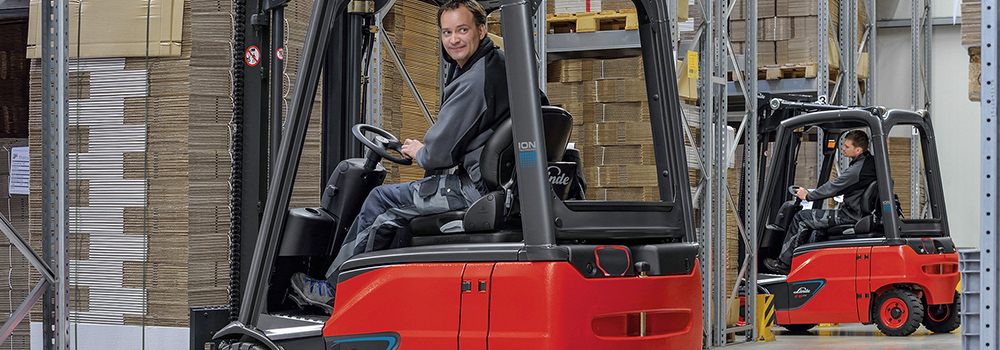
The electric counterbalance forklift uses a weighted rear to help balance itself while lifting heavy objects, allowing for smooth and stable transportation. Because they are electric, they are an eco-friendly forklift option. Despite being able to lift up to five tonnes, they are relatively quiet. Over the past ten years, they’ve rapidly established themselves as a vital part of material handling equipment set ups across the world.
The high-tech nature of the electric counterbalance means they are highly customisable, with customised versions being able to lift up to 18 tonnes.
While the electric element means they are eco-friendly, there is downtime while their batteries are charging. They are also expensive and can only be used indoors, meaning they are most frequently used in warehouses and factories to aid the lifting of heavy cargo.
Diesel/Gas Counterbalance
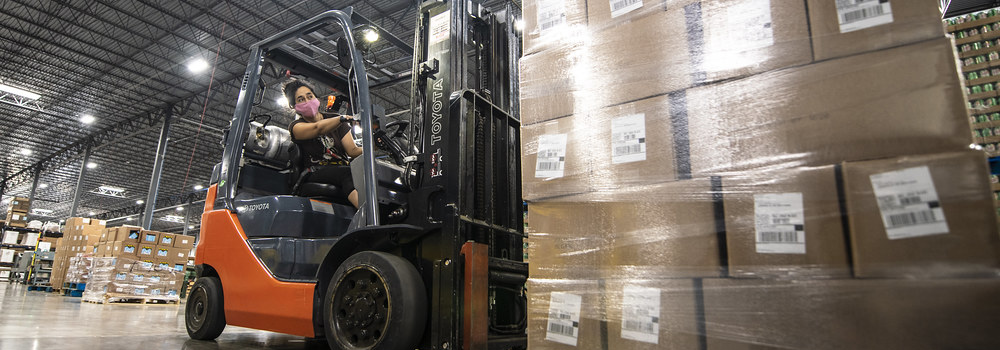
Diesel and gas counterbalances work in a similar way to their electric equivalents. But, unlike the electric counterbalance, these forklifts can be used outdoors as well as indoors.
They are lower cost than the electric counterbalance but are not as high-tech. The use of gas and diesel also means they are louder and not eco-friendly, but this does do away with the downtime caused by battery charging.
A gas counterbalance can lift up to 15 tonnes, while a diesel counterbalance can lift up to 48 tonnes. They can be used either in warehouses or on construction sites, moving heavy raw materials around the site.
Electric Pallet Truck
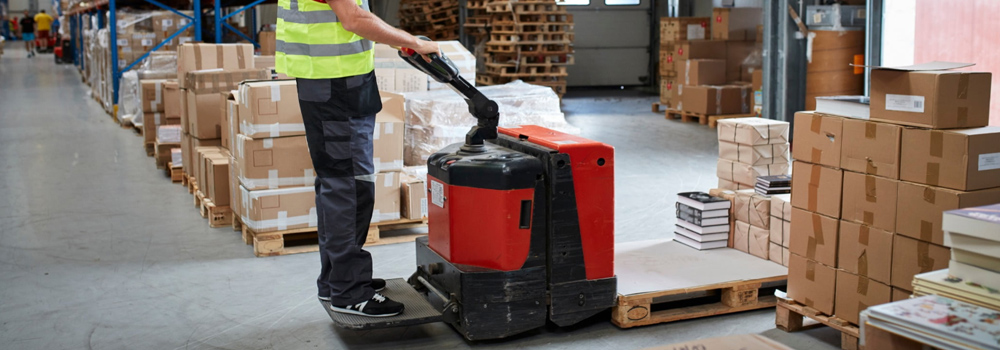
Electric pallet trucks are a simpler version of a forklift and are used to lift heavy pallets by small heights. They come in various sizes, from the electric walkie stacker, which is used for mid-sized cargo, to the off-road version, which is specifically designed to travel over rough terrain.
They range between 10-40m in size and weigh up to 500kg. Depending on the size of the truck, they can carry a cargo of up to 2,000kg.
Read our guide on how much different forklifts weigh >
Electric pallet trucks are typically used in warehouses either of small businesses or larger logistics companies to assist with loading and unloading vehicles. They are also often used at ports for the same reason.
Telehandler
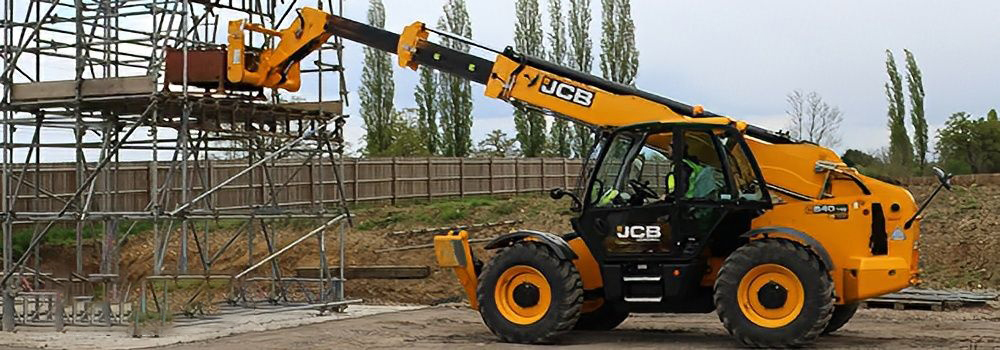
A telehandler is a forklift that has an extendable boom. They are very versatile and can be fitted with other attachments such as buckets or winches.
They can generally lift up to five tonnes, though the maximum weight they can carry depends on the size. Their telescopic boom can be extended up to 30 feet.
They are mainly used in construction and agriculture, being able to carry heavy loads of earth or building materials. Because of their adaptable nature, they can be fitted with attachments allowing them to plough snow.
Order Pickers
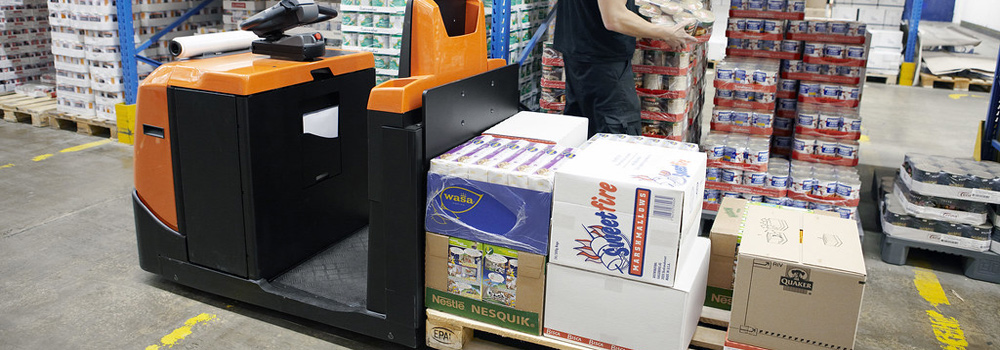
Order pickers differ from other forklifts in that they have a platform for workers to stand on, allowing them to take samples from different products that are stored in a warehouse.
They are available in varying sizes from low to high levels. They can be up to 12m tall and weigh up to 3,000kg. They can carry up to 1,300kg depending on size.
As they allow the user to take samples of different products, order pickers are often used in warehouses where versatile orders are fulfilled, such as the warehouses of pharmaceutical companies and vehicle parts companies.
Rough Terrain
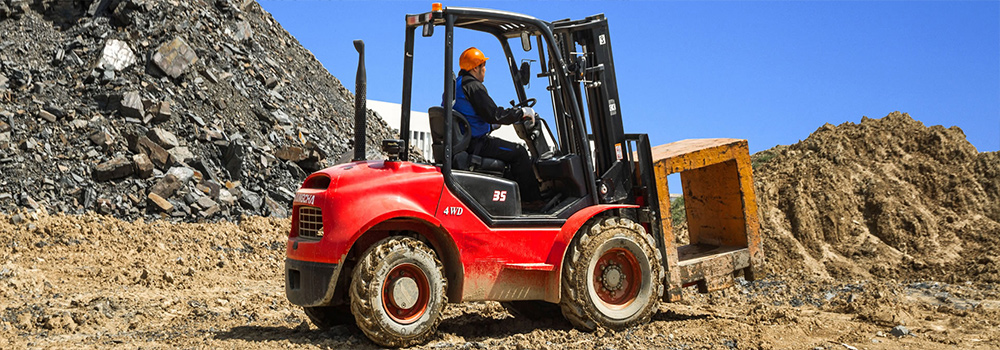
Rough terrain forklifts are one of the largest forklifts available and have pneumatic-cushioned tractor tyres, giving them greater ground clearance. This assists with travelling over rugged terrain or travelling in harsh conditions.
They can lift weights up to 3,600kg at a lift height of up to 10m. They can be fitted with telescopic booms as well as booms that can rotate up to 360 degrees.
Because they can traverse harsh conditions, such as woodland or uneven ground, rough terrain forklifts are used in the agriculture and forestry industries.
Reach Trucks
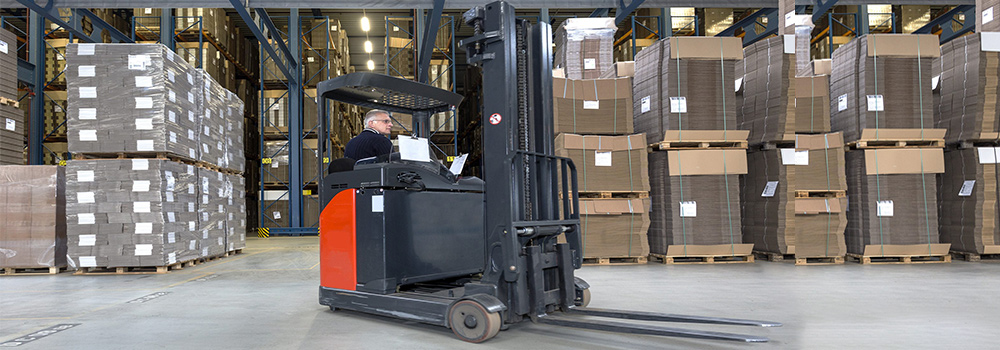
Reach trucks are designed to manoeuvre through narrow aisles, and so are frequently used in warehouses.
More compact than counterbalance forklifts, a reach truck cannot lift as much, with a load capacity of up to 4,000. They can, however, lift heavy loads up to 14m in height.
Their manoeuvrability and ability to lift weight to tall heights make reach trucks ideal for storage warehouses or warehouses for small businesses.
Electric Stacker
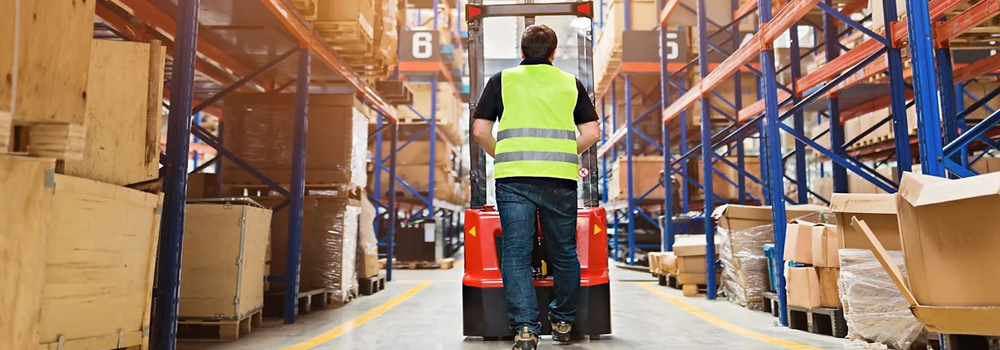
Electric stackers are used to lift and move pallets. Using an industrial battery or onboard battery pack, these stackers require the user to walk behind the forklift while using it.
Electric stackers are relatively inexpensive and the electric assistance they offer makes them a less labour-intensive option.
They can lift up to 1,200kg and are typically used in warehouses to help users efficiently lift and stack pallets.
Sideloaders
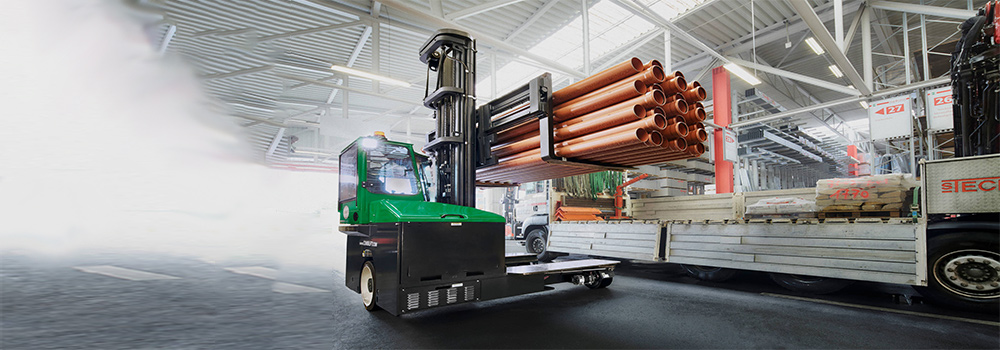
Sideloaders lift weights from the sides, meaning the operator has an increased view for improved manoeuvrability. Sideloaders are highly powerful and robust, meaning they can lift heavy loads.
They can lift up to 8,000kg and are ideal for carrying loads that are up to 7m long – such as wood, metal pipes, or metal sheets.
Their robust nature means that they are typically used in the steel and concrete industry as well as at ports, carrying long and heavy loads.
Conclusion
While there are a lot of forklifts on the market, each of them is suited to a particular job. Whether you need the flexible warehouse manoeuvrability that the electric counterbalance and electric stacker bring, or whether you need the heavy-duty lifting power of a telehandler, there is a forklift designed to meet your needs.